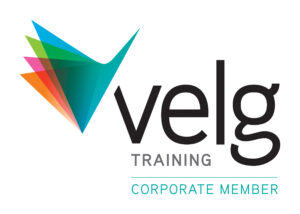Find out about the difference between rigging and dogging, and what a rigger and dogger do on the job site.
What is rigging?
The term rigger traditionally referred to someone who set up hoists and pulleys, however, these days the job description is much broader. Rigging encompasses all types of mechanical load shifting, such as transporting, positioning, securing and setting up equipment.
Essentially, a rigger is responsible for the safe movement of plant and equipment on a work site. This equipment can cover a range of static and moving equipment, including steel erections, hoists, safety nets and static lines, perimeter safety screens and shutters, and cantilever crane loading platforms. Placement of precast concrete also involves safe rigging procedures to move the panels into place.
A rigging qualification involves learning about the correct selection of equipment, erecting different structures for other workers to use safely, and how to safely dismantle structures and plant when the work is complete.
In order to do this work safely, riggers need to complete a basic, intermediate or advanced rigging course depending on the kind of work they will be doing.
Plus, you can’t be a rigger without also being a dogger, so getting your dogging ticket is part of training to be a rigger.
What is dogging?
Dogging encompasses a number of functions on a construction site. Primarily, a dogger is someone who is skilled in the use of slinging techniques to safely sling a load.
Someone who is appropriately trained in dogging is known as a dogman or dogger, and they play an important role in construction, demolition, heavy vehicle industries, shipping, freight and more.
A dogger is the main person responsible for the correct selection and inspection of lifting gear to safely sling a load, meaning they carry a serious responsibility on site. Loads that are not correctly secured with slings, hooks and chains can become a major safety hazard, so the dogger needs to be suitably trained and licensed in how to do their job.
Doggers are also trained in directing plant operators to safely move loads around a site. Along with tying down and slinging loads, the dogger helps crane, telehandler and excavator operators safely move their load when it is difficult for the driver to see.
By using hand signals, whistles and two way radios to communicate, the dogger can guide the plant operator to place their load down safely.
Do you need a ticket to be a dogman?
A big part of dogging work involves exercising good judgement in choosing the best lifting gear for the job, and the method of fixing it to the load.
If a dogger fails to appropriately rig an object, it can lead to serious and potentially fatal accidents on site, which is why dogman tickets are essential for anyone working in this field.
You can learn dogging with a registered training organisation and then apply for your ticket. As part of a dogman ticket or license, the dogger learns how to assess nature of the load, its mass, friction, strength and especially its centre of gravity.
What about rigging – do I need a rigger’s licence?
If you want to work as a rigger, you’ll need to undertake a course with a registered training organisation. Rigging involves a lot of dangerous aspects including working with heavy loads, so in order to get your riggers license, you’ll need to complete a basic, intermediate or advanced rigging course, and then once you have passed an assessment, apply for your license.
Are rigging and dogging covered under one license?
In short, no – dogging covers specific tasks in conjunction with cranes and lifting equipment, such as the use of slinging techniques, selection and inspection of lifting gear, and directing the crane operator in moving heavy loads.
Rigging covers all this and more, including safely erecting structural steel, placing precast concrete members, and setting up crane loading platforms.
Getting your dogging licence is the first step and is a prerequisite to obtaining the basic rigging licence.




